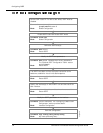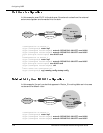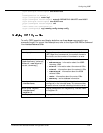
Configuring OSPF
Command Line Interface Protocol Configuration Guide 1-5
Table 1-1. Area Virtual Link Command
7.
Exit to Global Configuration mode and specify the interface on which OSPF is
running. This enters Interface Configuration mode. For example:
Cajun (configure router:ospf)#
exit
Cajun (configure)#
interface serial0
Cajun (configure-if:serial0)
area area-id virtual-link router-id [authentication-key key] [dead-interval seconds]
[hello-interval seconds] [message-digest-key key-id md5 key] [retransmit-interval
seconds] [transit-delay seconds]
area
area-id - area ID assigned to the transit area for the virtual link (decimal or
dotted-decimal format).
virtual-link
router-id - the router ID of the virtual link neighbor. To obtain a neighbor’s router ID,
Telnet to the router and enter the show ip ospf command.
authentication-key
key - password for the neighboring OSPF routers on a network segment using OSPF’s
simple password authentication. Up to 8 bytes of any continuous string of characters is
allowed. All neighboring routers on the same network must have the same password
to route OSPF traffic.
dead-interval
seconds - the number of seconds hello packets must not have been seen before its
neighbors declare the router down. The default is four times the hello-interval value.
The range is 1 to 65535. This value must be the same for all nodes on the specific
network.
hello-interval
seconds - number of seconds between the hello packets on the virtual link. The default
is 10 seconds and the range is 1 to 65535. This value must be the same for all routers
and access servers attached to a common network.
message-digest-key
key-id - a number the routers use for MD5 authentication. The range is 1 to 255.
md5 key - password the routers use for MD5 authentication. Up to 16 alphanumeric
characters are allowed. All neighboring routers on the same network must have the
same key-id and md5 key to route OSPF traffic.
retransmit-interval
seconds - number of seconds between link state advertisement retransmissions for
adjacencies belonging to an interface. The default is 5 seconds. The range is 1 to 3600
seconds.
transit-delay
seconds - estimated time to transmit a link state update packet on the virtual link. The
default is 1 second and the range is 1 to 3600 seconds.


















